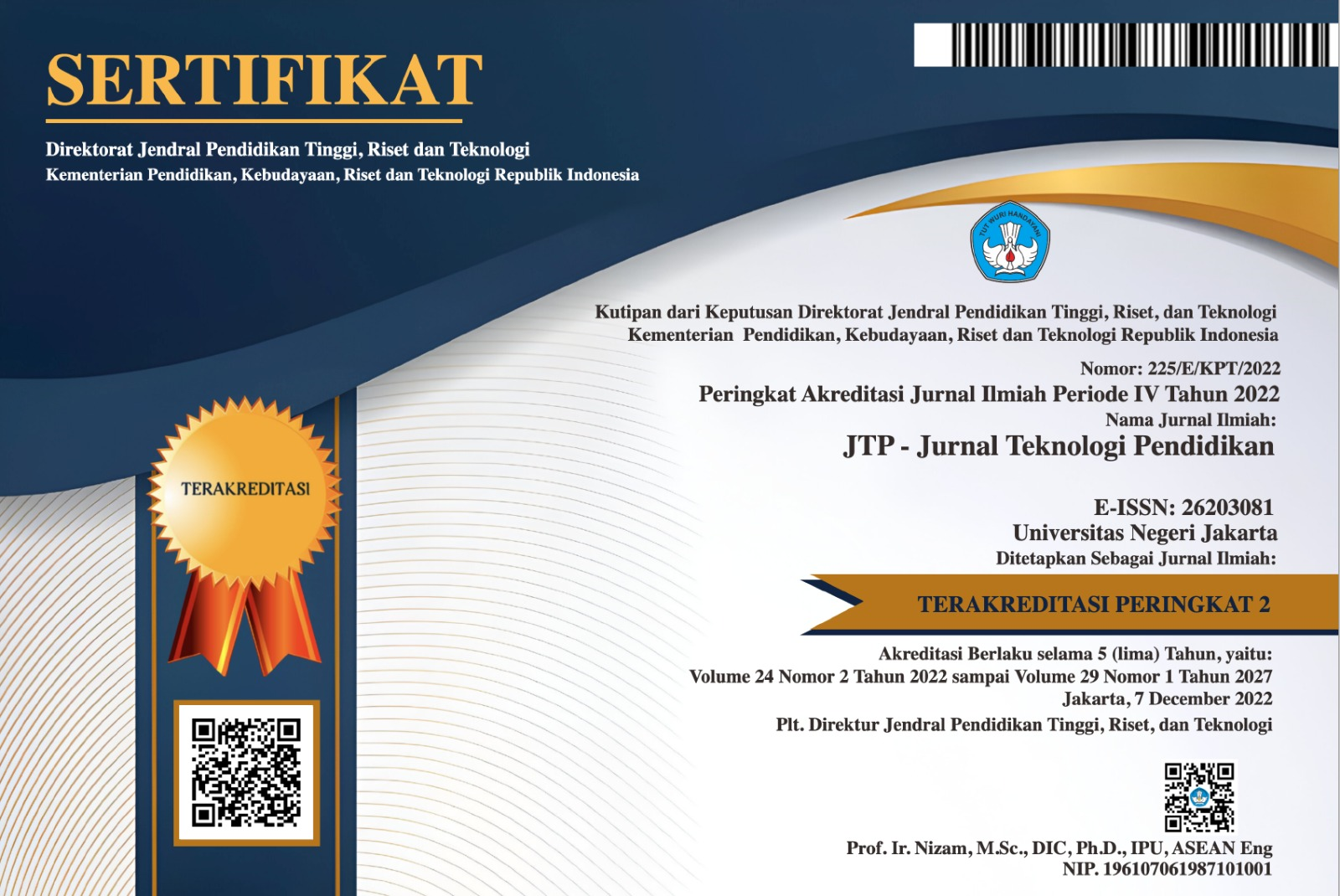Development of a Stakeholder Satisfaction System Model for Service and Education Quality
DOI:
https://doi.org/10.21009/jtp.v26i3.54383Keywords:
Education quality, Service quality, Stakeholder satisfaction, Higher education, University services, Quantitative analysisAbstract
This study aims to measure the level of stakeholder satisfaction with the quality of service and education at the Faculty of Education, State University of Malang. The research employs a quantitative analysis method, utilizing a structured questionnaire based on five service quality indicators: Tangible, Responsiveness, Reliability, Empathy, and Assurance. The questionnaire was distributed to stakeholders, including students, lecturers, and staff. The results indicate that the overall level of stakeholder satisfaction is high, with the Assurance indicator scoring the highest at 76.6%, reflecting strong trust in services provided. The lowest score was observed in the Responsiveness indicator at 72.8%, suggesting a need for improvement in addressing stakeholder needs promptly. The study is limited to stakeholders at the Faculty of Education, and the findings may not be generalizable to other faculties or institutions. The findings provide valuable insights for the Faculty of Education to enhance service quality, particularly in responsiveness, to better meet stakeholder expectations. This research contributes to the ongoing efforts to improve educational service quality by providing empirical data on stakeholder satisfaction within a specific academic context.
References
Anonymous. (n.d.). Service quality method (SERVQUAL).
Bernardin, H. J., & Russell, J. E. A. (1993). Human resource management: An experiential approach. McGraw-Hill, Inc.
Lemeshow, S. (1997). Sample size in health research. Gadjah Mada University Press.
Lupiyoadi, R. (2001). Services marketing management: Theory and practice. Salemba Empat.
Nasution, M. N. (2004). Total service management: Integrated service management (1st ed.). Ghalia Indonesia.
Ramaswati, N. L. (2014). Stakeholders analysis: A step toward designing effective relations during changes. Scientific Journal of the Faculty of Social and Political Sciences, 5(1).
Singarimbun, M., & Effendi, S. (2008). Survey research methods. LP3ES.
Sugiyono. (2012). Educational research methods: Quantitative, qualitative, and R&D approaches. Alphabeta.
Supranto, J. (2006). Measuring the level of customer satisfaction. Rineka Cipta.
Thoifah, I. (2015). Educational statistics and quantitative research methods. Madani.
Tjiptono, F., & Chandra, G. (2012). Service, quality, satisfaction. Andi Offset.
Wakka, A. K. (2014). Stakeholder analysis of forest area management with special purposes (KHDTK) in Tana Toraja Regency.
Zeithaml, V. A., Parasuraman, A., & Berry, L. L. (1985). Problems and strategies in service marketing. Journal of Marketing, 49(Spring), 33-46.
Downloads
Published
How to Cite
Issue
Section
License
Copyright (c) 2025 Sri Wahyuni, Zamroni, Rizka Apriani, Otto Fajarianto, Yuniawatika, Najwa Kamila Syarifa, Fitri Indra Kusumaningtyas

This work is licensed under a Creative Commons Attribution-ShareAlike 4.0 International License.
Jurnal Teknologi Pendidikan is an Open Access Journal. The authors who publish the manuscript in Jurnal Teknologi Pendidikan agree to the following terms.
Attribution-ShareAlike 4.0 International (CC BY-SA 4.0)
-
Attribution — You must give appropriate credit, provide a link to the license, and indicate if changes were made. You may do so in any reasonable manner, but not in any way that suggests the licensor endorses you or your use.
-
ShareAlike — If you remix, transform, or build upon the material, you must distribute your contributions under the same license as the original.
- No additional restrictions — You may not apply legal terms or technological measures that legally restrict others from doing anything the license permits.
Notices:
- You do not have to comply with the license for elements of the material in the public domain or where your use is permitted by an applicable exception or limitation.
- No warranties are given. The license may not give you all of the permissions necessary for your intended use. For example, other rights such as publicity, privacy, or moral rights may limit how you use the material.







